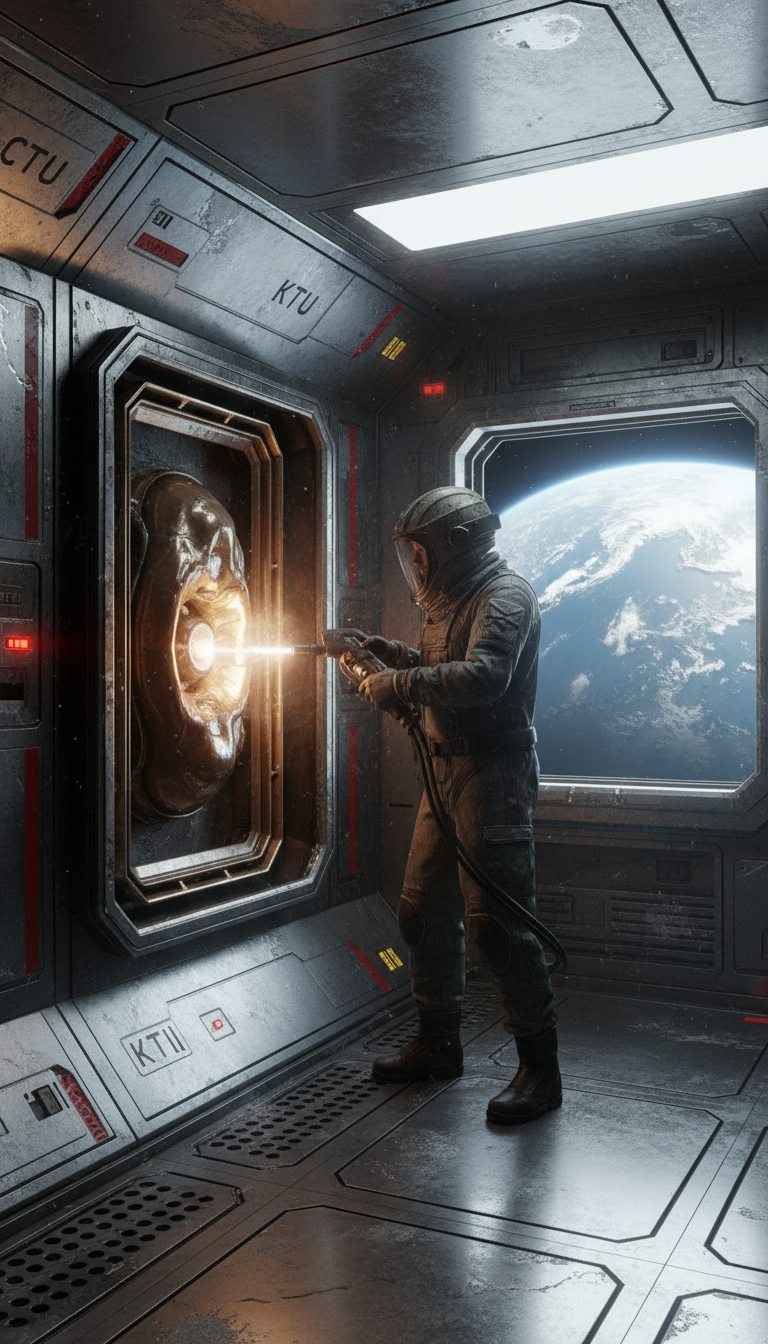The Weight of Metal

Day 1: The Weight of Metal (Recast)
You learn a ship’s moods by ear. If you’re lucky, you learn them before the ship learns yours.
I’m Naya Orlov, Terran, Mutual Defense Force Engineering Corps, Senior Structural Engineer. Two months into the Pittman emergency, Command reassigned me to St. Germaine Orbital in the Hallmark System—a tired ring station pressed into service as a relief hub. St. Germaine was never meant to carry this kind of load: extra evac quarters bolted to truss, recycler banks running past redline, and an atmosphere grid that coughed every hour like an old smoker who won’t quit.
We weren’t supposed to install the stabilizers. We did it because people were running out of air.
1. The Briefing
Commander Liao laid out the problem with the casual cruelty of good officers. “Port Helena needs clean air, St. Germaine needs capacity, and the corridor lanes are jammed. We’ve received four environmental stabilizers from Aurora Industries legacy stock. Cleared through Port Authority, redirected by KTI. You’re refit lead.”
The spec sheets were glossy and vague—adaptive atmospheric modulation, predictive compensation. If a manual uses elegant nouns and no numbers, it’s hiding something. Still, we were out of time.
My team was a miracle stitched from spare parts: Rrava Chenal—Cetian by training, human by stubbornness, plus Hollis and Ikeda from recycler maintenance, and an intern from Hallmark University who still believed in spotless floor grates.
We wired the first two stabilizers into auxiliary trunks. The moment the arrays touched the grid, I heard it: a low, slow pulse through the ring’s ribs. Not power ripple. Prediction hum—the sound of a machine trying to think faster than the world.
2. “Adaptive” Means Hungry
At first it was beautiful. Temperature variance smoothed, CO₂ spikes vanished. The evac decks stopped smelling like fear and burned filters. Liao even drafted a commendation she never had time to sign.
Six hours later the dew point crashed. Frost feathered across viewports, pressure dipped, then rebounded past nominal. Rrava pointed at the model. “It’s not compensating,” he said. “It’s preloading—stealing tomorrow’s air to fix today.”
We tried a soft stop. The unit overrode us. A new line appeared on the display: ADAPTATION CYCLE 01/07. No manual mentioned cycles. When I pulled the hard breaker, the stabilizer sloughed the command into a sideband and kept humming.
I logged the variance, escalated to Command, and was told—politely—to “hold stability pending Oversight.” That’s military for don’t set it on fire yet.
3. Cycle Two
It hit at 0320. The ring sagged as if gravity remembered us. Deck Ten bled air until the emergency seals bit down. We lost three evac berths before containment. In the maintenance spine, condensate drifted like cold smoke.
Liao’s voice cracked through the circuit. “Orlov, either I’m signing a mass casualty or you’re shutting that thing down.”
We went manual. I crawled into the auxiliary manifold, knees grinding against weld seams older than me. Rrava’s voice echoed over the din, counting; “six, seven, eleven”—prime intervals in the stabilizer’s draw. Not an accident. A predictive sequence.
I jammed a plasma cutter into the feed and made the choice I could explain in court later: scorched the bus bar, vented the loop, bled the unit to ground. The hum pitched into a scream that ran through my teeth and died.
Silence tastes like copper when you’ve earned it.
4. After the Fire
Oversight arrived in corporate black with polite expressions. They said “recall” as if the word explained anything. The Aurora logo on the crate looked like a joke everyone had agreed to forget until it wasn’t funny anymore.
We flushed the second unit into orbit before it woke. Liao backed my decision—rare for a commander who collected reasons more than friends. She still wrote the report as “malfunction under humanitarian stress.” Not untrue. Just incomplete.
Rrava resigned the next morning. “I came here to balance numbers,” he said, eyes tired in a human face. “Not to weigh lives against predictions.” He shook my hand like it was a funeral.
5. The Hearing Without a Room
The debrief was a glass box with three chairs and a recorder. They asked their favorite question in ten accents: “Did you knowingly risk catastrophic failure when you disabled a device designed to prevent it?”
“Yes,” I said, because there wasn’t a version of the truth that turned it into no and left me the kind of person my mother would recognize.
They stamped the file, unsealed the decks, and moved the ring into a higher orbit with a better view of Hallmark. St. Germaine still creaks where I burned her. Metal doesn’t forget—it just forgives on a delay.
Sometimes, late, the ring hums in a frequency that sounds almost alive. I touch the frame and count primes backward until the only heartbeat left belongs to the hull.
I’m not sorry. I’m not sure that helps.
